On Dec. 6, MCPS published a new School Profile Dashboard, making school information on enrollment, staffing, facilities and programs and academic pathways more accessible to the public. The Dashboard, and additional data published in the Maryland State Department of Education’s (MSDE) Maryland Public Schools Report Card, reveal disparities in test scores and overall academic achievement among MCPS high schools.
MCPS created the School Profile Dashboard as a new inclusive data collection initiative — the report is available in eight languages, provides summary graphs and allows users to save data in various formats. The Dashboard’s accessible format replaced the Schools at a Glance Report, which provided information on enrollment, staffing, facilities, programs and more in a single document summary.
The MSDE’s Report Card grades schools and districts across the state by measuring test results, data on postsecondary readiness, progress of English learners in achieving English language proficiency and graduation rate, according to a community letter sent by Principal Intern Gregory Miller on Dec. 13. Whitman earned an overall score of 77.9 out of 100, and was in the 95th percentile of Maryland schools, making it one of the highest scores in the state.
At Whitman, the average SAT score is 1,313, while at John F. Kennedy High School, the average score is 883. Discrepancies like these are reflected in other metrics as well. At Whitman, 82.6 percent of students passed an Advanced Placement (AP) and/or International Baccalaureate (IB) exam by the time they graduated, while at Gaithersburg High School, only 21 percent of graduates passed at least one of these exams.
Junior Katie Greenwald noticed discrepancies between schools as she traveled around the county for track and cross country meets.
“[While] visiting high schools across the county for sporting events, it’s apparent that disparities exist,” Greenwald said. “Whitman and other high schools in Bethesda have a lot of resources that other high schools lack. I’ve noticed that there are fewer people organizing events and there seems to be less support backing other schools farther out in the county.”
Dashboard data also shows that high schools with a higher percentage of students on Free and Reduced Meals (FARMs) tend to have a lower percentage of students passing AP/IB exams, as shown in the graph below. FARMs percentage is often used as an indicator of the overall wealth of a school.
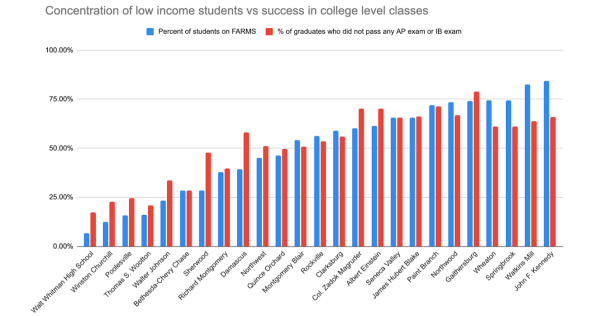
Other indicators of a school’s academic success, such as average SAT scores, AP/IB exam pass rates and graduation rates, suggest that students at schools with a wealthier population are more likely to score higher on these types of exams and standardized tests and ultimately graduate.
Dashboard data shows that the average student at Gaithersburg High School — one of the lowest ranked high schools in Montgomery County — is less likely to pass an AP/IB class and more likely to drop out compared to the average Whitman student. Roughly 74 percent of Gaithersburg’s student body is on FARMs, while only 6.9 percent of Whitman students are on the program.
Sophomore Avery Washington believes that students in high ranking schools with greater access to educational resources feel more pressure to succeed, which fosters competition among MCPS high schools.
“Whitman has some of the highest SAT scores and academic achievements of any public school in the state of Maryland,” Washington said. “I think it definitely puts a lot of pressure on students — not only on us but also on students at other schools.”
The Bethesda area is known for its prestigious schools like Thomas S. Wootton High School, Walter Johnson High School, Walt Whitman High School and Winston Churchill High School. Known as the “W schools,” these four schools consistently rank in the top 10 high schools in the state while the other 26 MCPS high schools rank as far as 129 places lower. Since school placement is based on housing districts, and the “W schools” are in areas with higher housing costs, it’s difficult for low-income students to attend top-ranked public high schools. The average home value in Bethesda, where Whitman is located, is $958,400 while the average home value in Wheaton, where John F. Kennedy is located, is $398,900.
MCPS distributes funds evenly among high schools, but disparities can occur with funding from Parent Teacher Student Associations (PTSAs). PTSAs from the “W schools” typically have larger budgets because of the higher household income levels in those areas. In 2020, PTSA clusters from Gaithersburg and Damascus had an average of $38,867 in total expenditures while PTSA clusters from Bethesda had an average of $59,857 in total expenditures.
MCPS Director of Shared Accountability Kecia L. Addison discussed the steps MCPS has taken to reduce and eliminate academic disparities in schools within the county.
“MCPS has been a front runner, from my perspective, in engaging in practices to reduce and eliminate academic disparities,” Addison said. “By examining historical and current data, the district can identify patterns, disparities, and areas where we make adjustments to ensure we uphold the values of the school system.”
In 2022, MCPS commissioned an Antiracist System Audit in response to racist incidents and claims of racial and socioeconomic inequality. The results showed that some focus group participants felt that MCPS communication to non-English speaking families or those from less affluent backgrounds was ineffective and exclusionary. MCPS then released the Antiracist System Action Plan to address concerns presented by the audit. The implementation of the plan is expected to relieve some of the racial disparities between schools, Superintendent Monifa McKnight said.
Junior Sierra Flowers attends Clarksburg High School, outside of the Bethesda area. She believes that Clarksburg is a great school, especially in terms of the extracurricular activities, many of which Flowers participates in. However, she acknowledges that there can be disparities in access to educational resources among different MCPS high schools.
“Attending an underfunded or a highly funded school, and your economic status are two big factors that can really affect how students learn,” Flowers said. “Some high schools may use certain websites that other schools might not even know about, or some schools might have better access to the internet.”
Despite efforts by MCPS to reduce and eliminate the impacts of racial and socioeconomic inequalities for students, 2023 Dashboard data shows that disparities among MCPS high schools persist.
“I’ve been handed pretty good resources in terms of college prep and things like that,” Flowers said. “I haven’t had any experiences where a person of color wasn’t given certain opportunities, but I think some high schools may have certain resources that other high schools don’t have — resources that could have been the key to passing a class or succeeding for some students.”
This story was originally published on The Black & White on December 26, 2023.

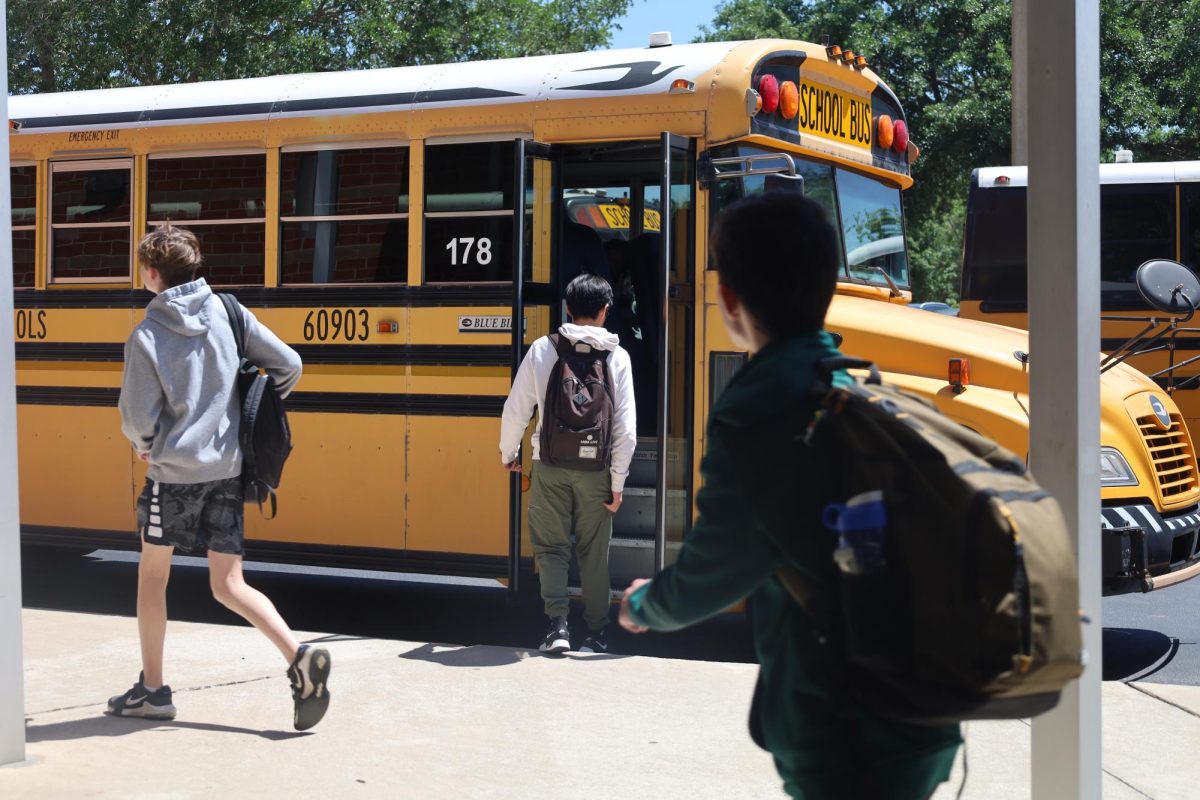


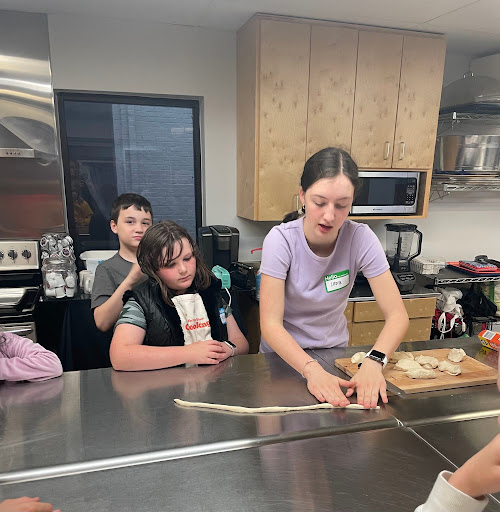
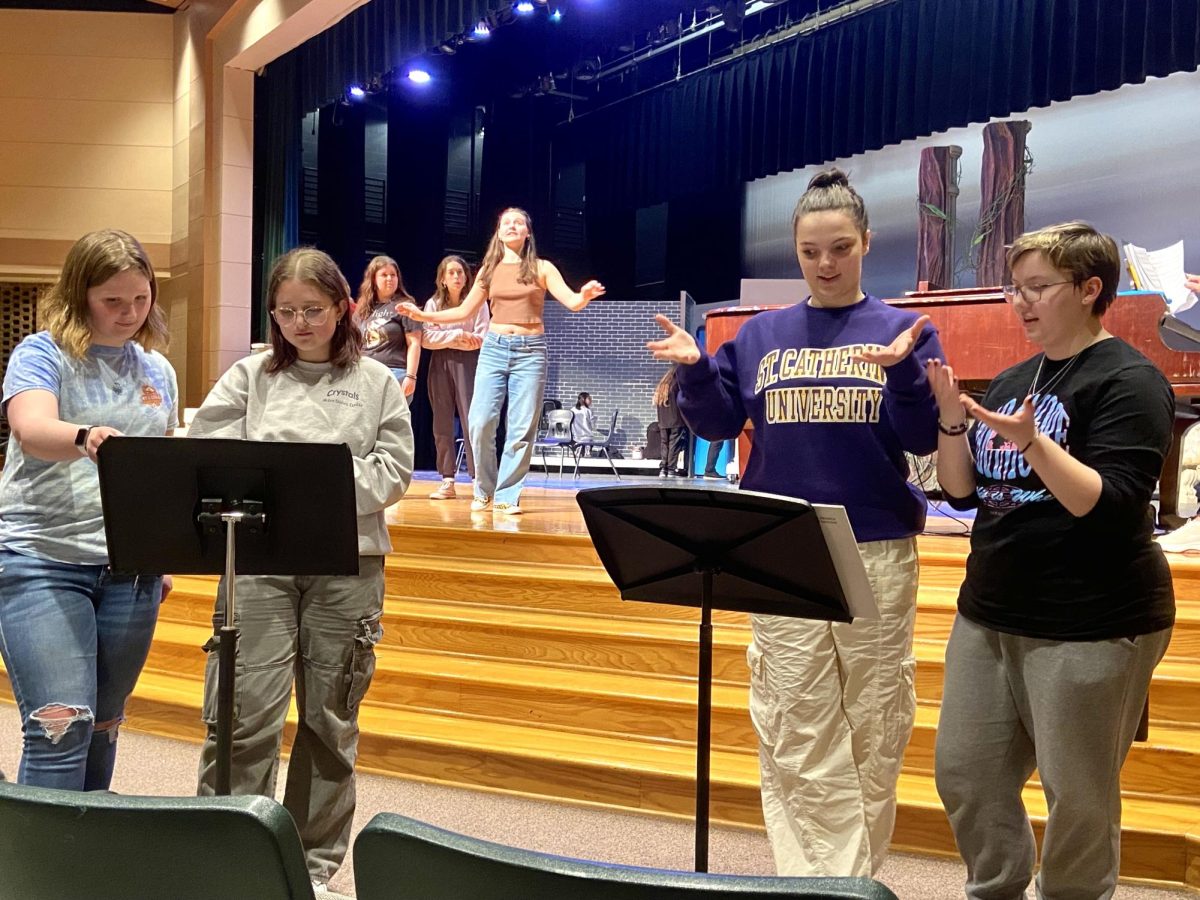
![It was definitely out of my comfort zone to get [the dress] and decide I loved it enough not to wait and risk not having something that memorable.](https://bestofsno.com/wp-content/uploads/2024/04/Precious_20180902_JRS_00008_ed1.jpg)
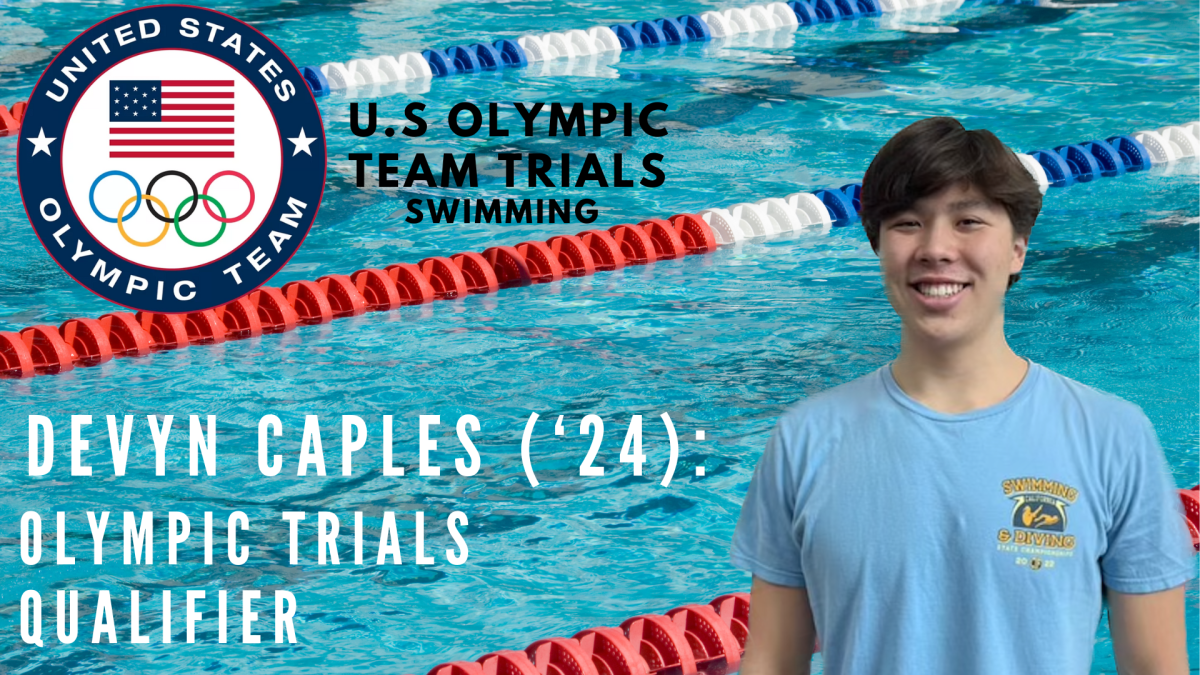

![Sophomore Sahasra Mandalapu practices bharatanatyam choreography in class. These new dances will be performed in an annual show in February. Mandalapu found that practicing in class helped her overcome stage fright during her performances. “When [I] get on stage, Im nervous Im going to forget, even though Ive done it for so long,” Mandalapu said. “Theres still that little bit of stage fright [when] I second-guess myself that I dont know it enough, but I do because Ive been practicing for a whole year.”](https://bestofsno.com/wp-content/uploads/2024/05/Sahasra-6-Large-1200x844.jpeg)

![In their full runway outfits, (from left) Audrey Lee 25, Olivia Lucy Teets, 25, Fashion Design teacher Ms. Judy Chance, and Xueying Lili Yang pose for a photo. All three girls made it to Austin Fashion Week by getting in the top 10 in a previous runway show held by Shop LC.
[I like my students] creativity and how they can look at a fabric and make it their own, Ms. Chance said.](https://bestofsno.com/wp-content/uploads/2024/04/IMG_9686-e1714088765730-1129x1200.jpeg)














![IN THE SPOTLIGHT: Junior Zalie Mann performs “I Love to Cry at Weddings,” an ensemble piece from the fall musical Sweet Charity, to prospective students during the Fine Arts Showcase on Wednesday, Nov. 8. The showcase is a compilation of performances and demonstrations from each fine arts strand offered at McCallum. This show is put on so that prospective students can see if they are interested in joining an academy or major.
Sweet Charity originally ran the weekends of Sept. 28 and Oct. 8, but made a comeback for the Fine Arts Showcase.
“[Being at the front in the spotlight] is my favorite part of the whole dance, so I was super happy to be on stage performing and smiling at the audience,” Mann said.
Mann performed in both the musical theatre performance and dance excerpt “Ethereal,” a contemporary piece choreographed by the new dance director Terrance Carson, in the showcase. With also being a dance ambassador, Mann got to talk about what MAC dance is, her experience and answer any questions the aspiring arts majors and their parents may have.
Caption by Maya Tackett.](https://bestofsno.com/wp-content/uploads/2024/02/53321803427_47cd17fe70_o-1-1200x800.jpg)
![SPREADING THE JOY: Sophomore Chim Becker poses with sophomores Cozbi Sims and Lou Davidson while manning a table at the Hispanic Heritage treat day during lunch of Sept 28. Becker is a part of the students of color alliance, who put together the activity to raise money for their club.
“It [the stand] was really fun because McCallum has a lot of latino kids,” Becker said. “And I think it was nice that I could share the stuff that I usually just have at home with people who have never tried it before.”
Becker recognizes the importance of celebrating Hispanic heritage at Mac.
“I think its important to celebrate,” Becker said. “Because our culture is awesome and super cool, and everybody should be able to learn about other cultures of the world.”
Caption by JoJo Barnard.](https://bestofsno.com/wp-content/uploads/2024/01/53221601352_4127a81c41_o-1200x675.jpg)





